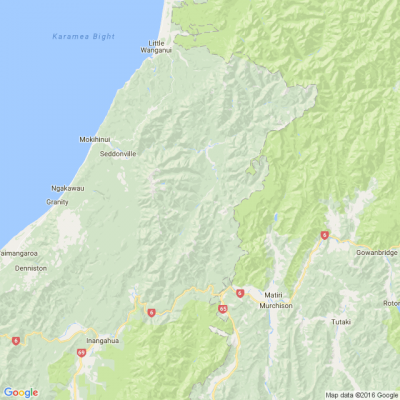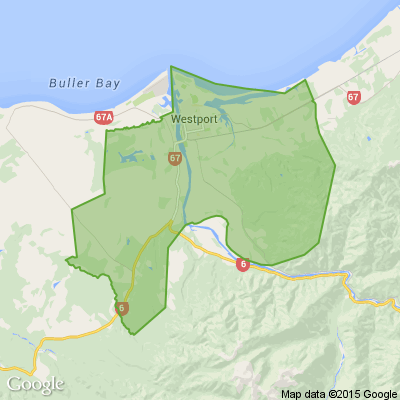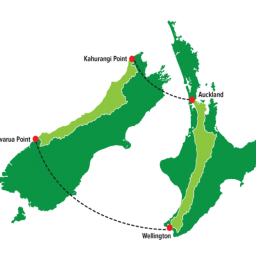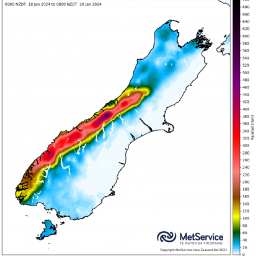Weather warning ‘overestimated’ West Coast rain – council
By local democracy reporter Brendon McMahon:
The West Coast Regional Council is reviewing its use of Metservice weather forecasts in its hydrology and emergency planning after what has been dubbed two "over-estimated" rain warnings in the region.
South Westland was put on high alert following a MetService 'red alert' on January 18 to 20, with up to 800mm forecast in the Waiho (Waiau) River catchment at Franz Josef Glacier.
On January 26, it issued another warning of up to 250mm. Local authorities mobilised but neither rain alert eventuated.
West Coast Regional Council chairperson Peter Haddock said this week official forecasts "not matching" reality was a real problem for the region.
The last two forecast events, with consequent warnings, had been "totally wrong" and only succeeded in "scaring the public away".
Haddock called for the regional council and West Coast Civil Defence to use a range of forecasters, "as opposed to MetService".
Westland District Council declared a state of emergency on January 19 based on the red alert warning of up to 800mm falling in 47 hours. It cleared and shut State Highway 6 all the way from Ross to Haast.
The rest of the region north of Hokitika was also subject to an orange alert that weekend, but instead enjoyed balmy weather - after visitors and several events had already cancelled plans.
The January 26 rain warning also came to nothing, but not without sensational headlines, including on RNZ, saying the "already sodden" West Coast was to have another deluge.
Haddock said offers of help poured in from South Island local authorities, and he responded by sending back photos showing the West Coast enjoying sunshine.
A better weather forecast approach to inform the appropriate response from the councils and Civil Defence was needed, he said.
"I believe other government agencies don't [only] use Metservice," Haddock told the council meeting on Monday.
Chief executive Darryl Lew said the Metservice forecasts for the last two events had "overestimated the rain" in South Westland.
"It is due to that, that a lot of regional councils don't just rely on Metservice," Lew said.
He was considering adding Niwa as it had "significantly increased its level of forecasting", noting that DOC now used Niwa in a range of forecasts. That agency also had the benefit of providing corresponding flood modelling.
"I'm leading an internal debrief inside regional council hydrology and Civil Defence. That will endorse Niwa plus Metservice," he said.
Lew, who has a background as a hydrologist, said peak forecasting was "vital" to understand the potential for flooding.
Councillor Andy Campbell, of Harihari, said the 650km-long West Coast had varying weather patterns anyway, in contrast to that represented in forecasts and relayed in the national media.
"A lot of it is localised."
Speaking after the meeting, Haddock said he used a range of weather forecasters himself and discounted predictions by a large percentage of them, finding this was usually more accurate than official forecasts.
What had transpired "was basically a non event" on January 18-19 and again the following weekend.
The Coast deserved better given it is the same distance from Auckland to Wellington - and with businesses and visitors reliant on reputable forecasts.
"It's the reputational damage with people thinking this is an unreliable place," Haddock said.
MetService head of weather communication Lisa Murray said the MetService took its role seriously and strove to give the most accurate and timely forecasts.
This included accessing all leading global weather models to collate a broad view, she said.
For the red and orange alerts on January 18-19 and on January 25-26, MetService worked closely with the regional council, and had a close ongoing relationship.
However, all weather models had "strengths and limitations" - one limitation being the "complex topography" of New Zealand.
"MetService high resolution models make improvements over this limitation, however, as is with the nature of forecasting it is not a perfect science."
MetService had liaised closely with West Coast local authorities, including the regional council's hydrology team, before issuing the red alert, after gleaning local insight on the impact the forecast rain amount "could have".
"As there was good consensus in the weather models, it was agreed that this could result in a significant event.
"Rainfall amounts, over the 47 hours covered by the red warning for Westland, were very similar to the March 2019 West Coast event, which had large impacts on the region including the collapse of the Waiho River bridge, and damage to sections of State Highway 6."
The increased risk to an influx of summer tourists into the district was a prime consideration, Murray said.
GRAPHIC: West Coast Regional Council.
A geographical comparison of the 650km long West Coast region often used by the West Coast Regional Council in official submissions to highlight the challenges in servicing the sparsely populated region (about 32,000).
PICTURE: MetService
Image is the MetService radar rainfall accumulation for the hours the red warning was issued for South Westland. This shows where the radar detected rainfall across the region during the warning period.
Poll: Are our Kiwi summer holidays helping us recharge, or holding the economy back? ☀️🥝
There’s growing debate about whether New Zealand’s extended Christmas break (and the slowdown that comes with it) affects productivity.
Tracy Watkins has weighed in ... now it’s your turn. What’s your take? 🤔

-
72.8% We work hard, we deserve a break!
-
16.1% Hmm, maybe?
-
11.2% Yes!
Secure your homes over summer
Police are reminding people to keep their homes secure during the summer months.
Inspector Glenda Barnaby, Christchurch Area Prevention manager, says daytime burglaries are just as common as nightime burglaries.
“Burglaries can be committed at any time of the day, and coming into warmer months there is more opportunity for thieves."
"Although a majority of burglaries involve forced entry through windows and doors, we are starting to see more incidents at insecure premises. Police deal with cases where burglaries are committed in broad daylight, sometimes even while the victim is at home. Good weather means open doors and windows, which makes homes more vulnerable to burglars.”
Inspector Barnaby says there’s a few things people can do to reduce their changes of a burglary being committed.
⚠️ If you’re going outside for gardening, relaxing in the sun, or working in the garage, take a moment to lock your doors and secure your windows first.
⚠️ Do the same at night when you go to bed - keep your doors and windows secure and close your curtains. Fitting window stays means you can get a breeze coming through, while keeping your windows secure.
⚠️ Get to know your neighbours - let them know if you’re going away and look out for one another.”
If you see any suspicious activity, people or vehicles in your neighbourhood, don't hesitate to contact Police.
If you witness or suspect any illegal activity, please call 111 if it is happening now, or make a report through 105 either online or over the phone, if it is after the fact.

Brain Teaser of the Day 🧠✨ Can You Solve It? 🤔💬
How many balls of string does it take to reach the moon?
(Peter from Carterton kindly provided this head-scratcher ... thanks, Peter!)
Do you think you know the answer? Simply 'Like' this post and we'll post the answer in the comments below at 2pm on the day!
Want to stop seeing these in your newsfeed? No worries! Simply head here and click once on the Following button.









 Loading…
Loading…